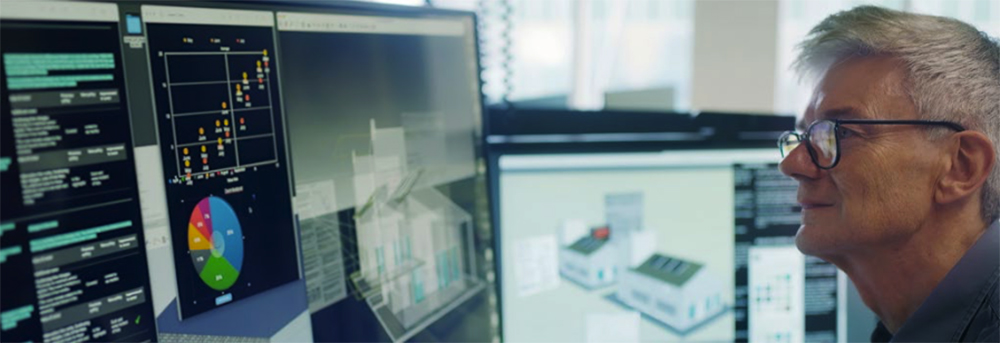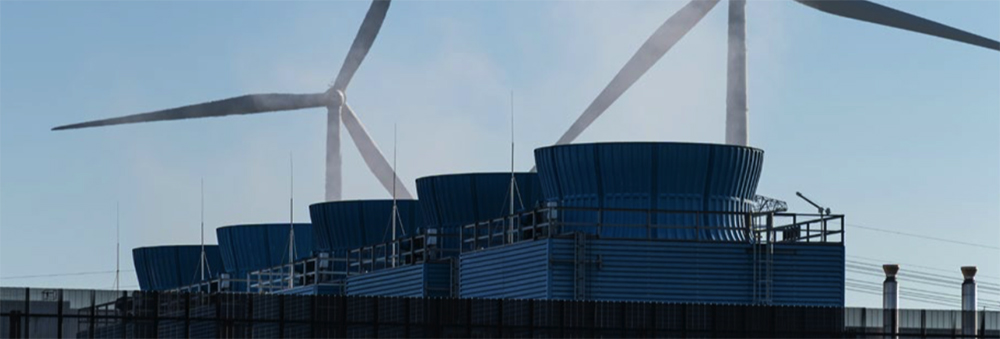Could lack of sustainable IT investment lead to tender exclusion?
Contents |
[edit] Smarter IT to stay ahead of the ESG curve
With growing environmental, social and governmental concerns, there is an industry-wide drive towards more sustainable design and build practices. But the role of enterprise technology – in exacerbating the problem and contributing to the solution – gets overlooked. This article aims to explain how smarter IT choices can help architectural firms to stay ahead of the ESG curve.
The impact of the built environment on climate change is widely acknowledged. Buildings account for 40% of global energy consumption and a third of greenhouse gas (GHG) production. Moreover, cement and concrete manufacturing emissions have doubled in 20 years, accounting for 8% of global CO2.
Architecture firms know they have a pivotal part to play in delivering a lower carbon future. Architects Declare is among those calling for real change. Carbon offsetting is increasingly discredited as a form of greenwashing. Quite rightly, there is rising pressure on architecture, engineering and construction (AEC) organisations to provide clear evidence of the benefits of their ESG policies. Last year, two UK ESG disclosure laws became mandatory and other governments are doing likewise.
These warning shots herald greater change. Public tender requirements are growing tougher and stiffer widespread stipulations are expected, with the potential to damage non-compliant firms’ bottom lines. Exclusion from tenders looms unless firms can substantiate their sustainability claims.
[edit] Delivering change from the inside out
Although design and construction practices are evolving, working practices within AEC organisations themselves remain overlooked. Legacy IT has hampered operational efficiency across the industry for years, but the fact that outdated IT infrastructure is also a massive CO2 generator is not well known. Enterprise technology accounts for 1% of global GHG emissions: equal to half the emissions from aviation and shipping and the total produced by the UK.
But implementing sustainable IT is not merely about reviewing infrastructure for carbon reduction; it is also about transforming working practices, operations and solution efficiency.
Unfortunately, many architecture firms are not practicing what they preach. It is common for designers and engineers to work on bids for eco-friendly projects on power-hungry CAD workstations, not using renewable energy sources. When operations start, project teams repeat that behaviour many times over. 60 traditional workstations running for twelve hours produce around 48,000kg of CO2eq (Calculations based on Dell research and 60devices used over a12-hour period) servers and Dell XPS laptops. All calculations were accurate as of vendor technical specs 2023 - the equivalent of driving seven times around the Earth in a family car.
[edit] IT teams hold the key
There are a number of steps IT teams can take to make a tangible difference to their firms’ environmental impact. Adopting Desktop-as-a-Service is one way to contribute to ESG goals, for example by using VDIPOD, a purpose-built VDI platform tailored for AEC applications. Hosted from data centres using 100% renewable energy, it offers architecture firms a path to net zero with metrics and an audit trail to simplify ESG reporting. Compared to traditional CAD workstations, AEC companies deploying the service use 81.7% less energy with an 89% renewable power model (one VDI server supporting 60 laptops/thin clients) and CO2eq reduced by up to 43% (Calculations based on standard Dell high graphic workstations, Supermicro VDI servers and Dell XPS laptops. All calculations were accurate as of vendor technical specs 2023).
A multi-award-winning international architecture studio migrated over 400 employees to VDIPOD, already achieving a 90% reduction in kilowatt hours per person and a three-fold increase in renewable power use. These benefits are set to grow as the platform is rolled out to Asia, Canada and the US.
Savvy architectural practices can also reduce their environmental impact by transitioning to an Infrastructure- as-a-Service (IaaS) model. With fully-managed IaaS, infrastructure responsibility moves to the service provider, along with power consumption and carbon footprint. IT teams can lower energy consumption, cooling costs and decommissioned equipment waste by migrating data, applications and IT services to the cloud, as they no longer need on-premise technology. Cloud providers can also improve sustainability and ESG scores by using intelligent virtual machines and containers to reduce data centre server numbers.
Global engineering company SNC-Lavalin is working with Creative ITC to transition from sixteen global data centres to three. “One of the biggest benefits we’ve already seen in our carbon footprint is we’ve reduced storage by 69%. We’ve reduced electricity by 53% and floorspace by 45%,” said Steve Capper, Group CIO of SNC-Lavalin.
[edit] Unlocking future value
Sustainable managed IT solutions like DaaS and IaaS can help companies dramatically reduce their carbon footprint and positively impact ESG scorecards. Architecture firms can now take advantage of a new breed of MSPs with the expertise to help them unlock the greatest value from transitioning to futureproof IT infrastructures, adopting new technologies and improving their working practices.
When looking to transition to the cloud and engage an MSP, always scrutinise their ESG credentials and industry experience to ensure you achieve the greatest impact on sustainability goals. With hyperscalers increasingly under fire for lack of environmental controls and under-used resources, it is worth considering smaller cloud providers. Creative data centres run at around 90% utilisation and achieve a power usage effectiveness ratio of 1.2 compared to an industry average of 1.8. Creative’s private cloud solutions are hosted from Equinix-powered data centres, which operate on 100% clean, renewable energy.
The connection between ESG aims and business value is clear. As well as helping meet environmental goals, architecture firms adopting best practice will
reap financial and operational rewards. As ESG tender requirements increase, they will have greater bid opportunity and fewer regulatory interventions. Sustainable firms outperform their industry peers on profitability and EBITDA, and enjoy top-line growth, increased productivity and reduced costs. Publicly owned high achievers are also likely to see better equity returns, lower downside risk and higher credit ratings.
Business and IT leaders should keep these benefits front of mind and leave no stone unturned to transform their architectural firms for the better. Future success – for their firm, the wider industry and the planet – depends on it.
This article appear in the AT Journal no 146, summer 2023 under the same title and was written by Keith Ali, Managing Director, Creative ITC.
--CIAT
[edit] Related article on Designig Buildings
- Blockchain.
- Building information management.
- Building management systems.
- CIAT Articles.
- Computer aided manufacturing.
- Computers in building design.
- Computer numerical control.
- Cyber security.
- Data.Design and build: tender.
- Digital information.
- Employer's information systems and environments.
- Geographical information systems.
- Information and communications technology in construction.
- Information technology
Featured articles and news
RTPI leader to become new CIOB Chief Executive Officer
Dr Victoria Hills MRTPI, FICE to take over after Caroline Gumble’s departure.
Social and affordable housing, a long term plan for delivery
The “Delivering a Decade of Renewal for Social and Affordable Housing” strategy sets out future path.
A change to adoptive architecture
Effects of global weather warming on architectural detailing, material choice and human interaction.
The proposed publicly owned and backed subsidiary of Homes England, to facilitate new homes.
How big is the problem and what can we do to mitigate the effects?
Overheating guidance and tools for building designers
A number of cool guides to help with the heat.
The UK's Modern Industrial Strategy: A 10 year plan
Previous consultation criticism, current key elements and general support with some persisting reservations.
Building Safety Regulator reforms
New roles, new staff and a new fast track service pave the way for a single construction regulator.
Architectural Technologist CPDs and Communications
CIAT CPD… and how you can do it!
Cooling centres and cool spaces
Managing extreme heat in cities by directing the public to places for heat stress relief and water sources.
Winter gardens: A brief history and warm variations
Extending the season with glass in different forms and terms.
Restoring Great Yarmouth's Winter Gardens
Transforming one of the least sustainable constructions imaginable.
Construction Skills Mission Board launch sector drive
Newly formed government and industry collaboration set strategy for recruiting an additional 100,000 construction workers a year.
New Architects Code comes into effect in September 2025
ARB Architects Code of Conduct and Practice available with ongoing consultation regarding guidance.
Welsh Skills Body (Medr) launches ambitious plan
The new skills body brings together funding and regulation of tertiary education and research for the devolved nation.
Paul Gandy FCIOB announced as next CIOB President
Former Tilbury Douglas CEO takes helm.
UK Infrastructure: A 10 Year Strategy. In brief with reactions
With the National Infrastructure and Service Transformation Authority (NISTA).

























